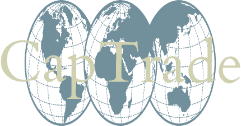IMF Lowers WEO Projections
The International Monetary Fund continues to revise its global growth projections downward but it is having trouble keeping up with a steady stream of bad news. In October, the Fund released its latest edition of the World Economic Outlook, a biannual survey of the global economy. In this installment, the authors describe a persistently “uneven global recovery.” While they projected growth in global output of 3.3 percent in 2014 and 3.8 percent in 2015, both of those figures were revised downward from the Fund’s April projections of 3.6 percent and 3.9 percent, respectively. The graphs below show actual and expected growth for 2012 to 2015 according to the IMF’s WEO. The following graphs display growth by type of economy and geographic region.
In advance of the G-20 meetings in Brisbane, Australia on November 15-16, the IMF staff published a report that lowered expectations further. Global Prospects and Policy Challenges discusses key developments since the release of the October WEO: a downward correction and increased volatility in financial markets, a sharp drop in oil prices, and further signs of weakness in the advanced economies, notably Japan and the Euro area. The authors describe the Japanese recovery as “weak but still ongoing,” suggesting that they were not prepared for the news out of Tokyo on Monday: GDP fell by 1.6% in the third quarter, meaning that the Japanese economy is officially in recession.
Throughout the recent slew of bad news, the IMF has held a consistent line on its policy recommendations: maintain accommodative monetary policies and “growth friendly” fiscal policies. Fiscal conditions and available policy options vary significantly by country but, on the monetary front, the central bankers of some of the world’s largest economies seem to agree. On Wednesday, the Bank of Japan announced more quantitative easing, broadening its monetary base even further than its late October round of QE. On Friday, the People’s Bank of China announced significant cuts to its benchmark deposit and lending rates and Mario Draghi, president of the European Central Bank, announced stronger monetary actions, opening the door for even bolder steps in the future. Many observers consider Draghi’s speech to be an announcement that the ECB is considering its own version of quantitative easing, a practice that is controversial in Europe due to German opposition.
China, Japan, and the Euro area represented 35.9 percent of 2013 world GDP on a nominal basis, according to World Bank estimates. Thus, more than a third of the global economy is now pursuing monetary policy that is considerably more expansionist than this time last month. In contrast, the United States and United Kingdom, which represent 25.8 percent of current dollar world GDP, are in the midst of monetary tightening. This combination is leading to a stronger dollar and pound, which will offset to some extent the benefit to U.S. and UK exports in major export markets.


